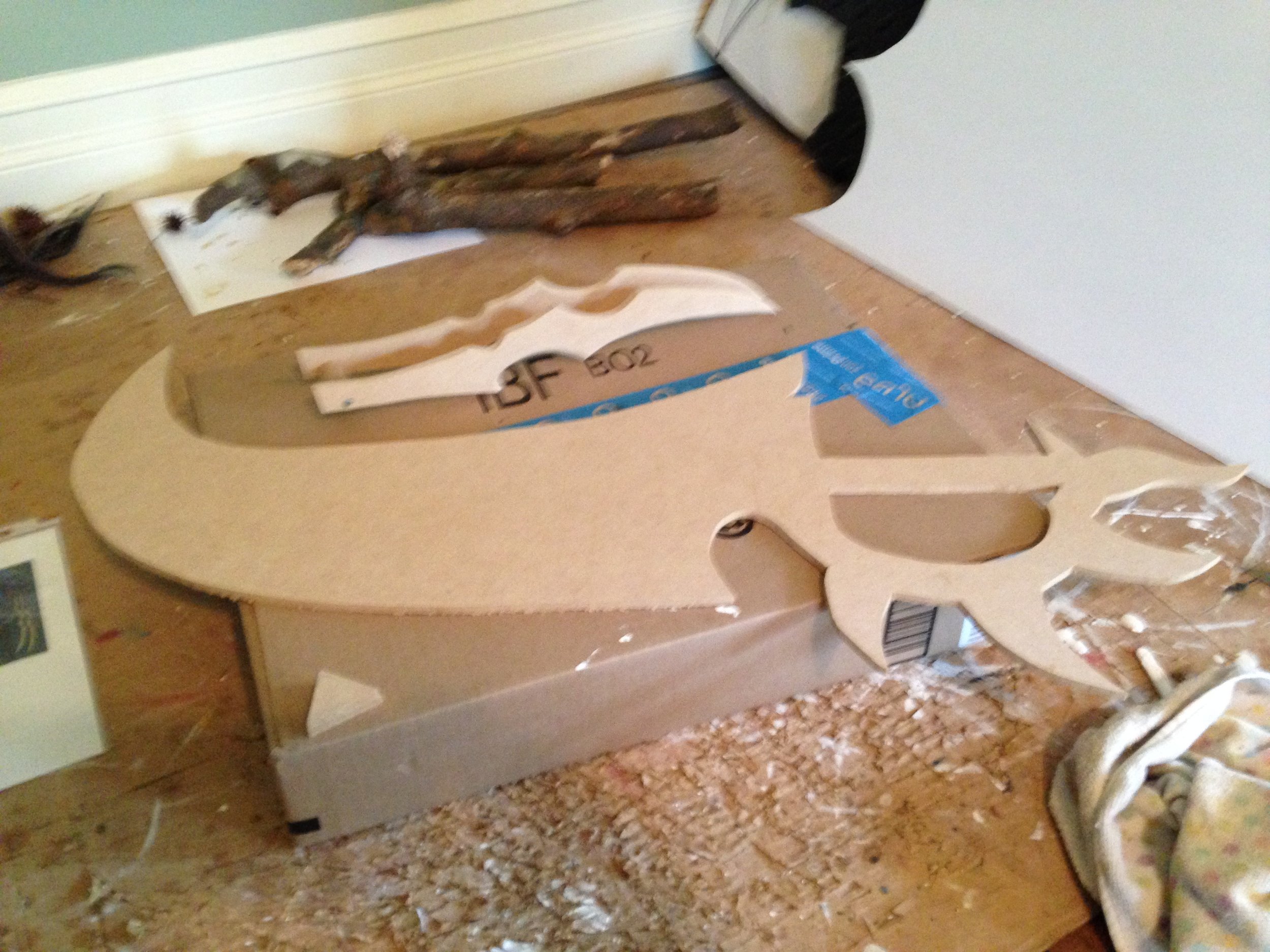Materials Monday: MDF
Michael MacWolff
Well, it's been a while since I've done one of these so I figure it's high time I got a regular thing started here... at least until I run out of useful materials to talk about.
This week we're going to talk about MDF, which stands for Medium Density Fiberboard.
MDF is very similar to wood in the way I use it in props. It comes in thin, flat boards that can be cut and sanded to fit your needs. I would even go so far as to say I generally prefer it to wood, and here's why:
- Unlike wood, MDF will be perfectly flat, and remain so, even when you're working with thinner boards. Thin craft wood can often warp or bend, either before you purchase it from the store, or even after you start working with it.
- MDF doesn't have a grain. This means that you won't have to sand/coat/sand/coat.sand/coat/etc. as much as you would with wood to get a perfectly smooth surface. In addition, it's going to be sturdier than wood when you have thin pieces.
The scissors I made for Ramos are made out of thin craft wood, and the skinny parts that connect the handle to the blade section on each piece both snapped along the wood grain. I plan to make a new set of shears with MDF for the next time I cosplay him.
- MDF comes in a lot of different thicknesses so it's pretty versatile for different projects. Wood does too, but it's hard to find the variety you need for some projects.
- MDF usually comes in long, wide boards which mean you can buy a single board and often use it for multiple projects, depending on what all you're making
- MDF is a little "softer" than most craft wood. What that means is it's a little easier to sand. I've used my dremel with a sanding bit and gotten a really nice beveled edge on some of the swords I've made with MDF
- MDF is pretty easy to work with, assuming you have the right tools. You will need a jigsaw or something comparable to cut it, and you'll probably want a dremel as well to make sanding easier. But of course you can always sand your stuff by hand, it just takes longer.
The only real downside to MDF is that it tends to be heavier than wood, so if you're using it for larger projects they're going to be a lot to carry around at a con.
MDF is great for a lot of different types of projects, but is probably most useful for swords and other blades because it's thin, flat, and sturdy!
Now, let's look at a few MDF projects I've done!
Photo by Madster Cosplay and Photography
The FF XV engine sword I made for Heckin Sleepy Cosplay has a base made from MDF.
Now there's a lot of weird details on this sword, most of which are made from random plastic things, but this little guy is also made from MDF, so you can see it works well for smaller stuff too.
You can also see in this photo that I sanded the edge of the blade into a nice bevel, as well as sanded out some details, like the line across the top of the blade. I did all of that with a dremel tool & sanding bit, and then used some fine-grit sandpaper to smooth things out.
The second major thing I made using MDF is the Rengar set from League of Legends. Both the base of the large sword, as well as the smaller arm blades are made from MDF.
I cut out & beveled the small blades directly on the MDF, but for the big blade, I ended up using foam board to achieve the bevel, since it was too wide to have easily been able to do directly on the MDF. I did, however, bevel the small points around the guard on the sword.
MDF worked out great for this project because of the width of the blade. It would have been difficult to find a wood board that would have been wide enough to make this, and even if I found one, there's a good chance it wouldn't have been perfectly flat, making the foam board more difficult to mount effectively.
If you're curious about the work I did with the foam board here, you can check out my first Materials Monday post, which is all about foam board.
The other project that comes to mind when thinking about MDF is the Crescent Rose I built for my husband.
Now most of this was done out of foam board, because to have made it all out of MDF would have been super heavy and downright unwieldy! But there are a few spots that would have been too weak to make out of foam board: the blade on the end, and the spear point on the back.
I don't have any photos of the spear end, but here's the front blade. With it being made out of MDF, there's no worry of hurting the end if it accidentally get's whacked, and you can set the point down on the ground to pose with the "sniper rifle" mode, because of course it's also a gun.
I put it on my foot here, because of course I could still chip the paint if I wasn't careful, but if that were foam board this wouldn't even be possible!
So, I hope this has been helpful and informative for all of you folks!
I'm hoping to do Materials Monday about once a month, on weeks that I don't have Throwback Thursday posts, so I hope you'll tune in next time to learn about more great prop-making materials!































